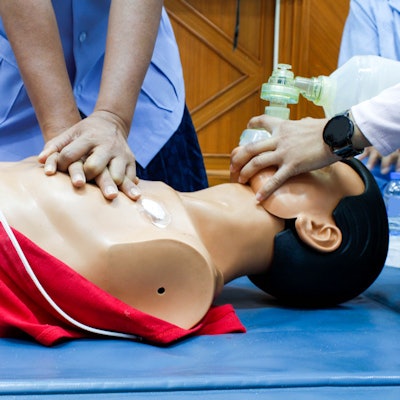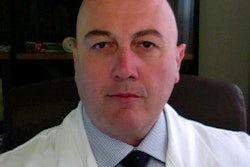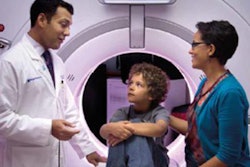
A new survey has revealed a clear lack of knowledge among Portuguese radiographers about basic life support (BLS). The authors are convinced more education and hands-on training are crucial to make cardiopulmonary resuscitation (CPR) available in radiology departments in case of cardiac arrest and acute anaphylactic reaction.
"It is vital that radiographers immediately recognize the symptoms of sudden cardiopulmonary arrest and start the chain of survival promptly through CPR," noted lead presenter Catarina Pereira, from the Medical Imaging and Radiotherapy Department at the University of Algarve in Faro. "Although it is a very important issue, it still gets poor attention in the scope of training programs."
To assess this issue, Pereira and her colleagues sought to evaluate the knowledge of radiographers about adult BLS guidelines. They adopted a cross-sectional, nonexperimental research design involving a sample of 39 qualified radiographers from two different public hospitals (referred to as Hospitals A and B).
They adapted a self-applied, paper-based questionnaire from the form used by Neves et al (Fisioterapia Pesquisa, January/March 2010, Vol. 17:1, pp. 69-74). It contained two main parts -- demographic detail, and multiple-choice questions about recent training and knowledge of adult BLS -- and was given to radiographers between November 2016 and January 2017.
Results under scrutiny
The group presented their findings at ECR 2018 in Vienna. Of the 39 radiographers who participated in the study, 19 worked in Hospital A (48.7%) and 20 in Hospital B (51.3%). They were asked about how many BLS courses or training sessions they had participated in as professionals. Six of the sample had never attended any course/training related to BLS, and 20 radiographers did not have the BLS course validated, meaning only 13 radiographers were qualified to perform BLS.
None of the radiographers correctly answered all eight questions. Six radiographers correctly answered a total of six questions, seven gave correct answers to five questions, and 15 gave the right answers to four questions. Only 38.5% of the sample (13 radiographers) gave correct answers to more than four questions. A total of 56.5% of the radiographers knew how to check for pulse timing and 56.4% knew the most appropriate rate of CPR for an adult (chest compressions and breaths), while 97.4% correctly indicated the maneuver that can be used to open the airway.
At the end of the questionnaire, radiographers were asked if they felt confident to perform BLS if necessary, and only 22 of them (56.4%) responded that they felt confident. When correlating this question with the question about the recommended sequence in case of CPR, only five of these 22 (22.7%) respondents correctly answered this question.
Indications for CPR
When there is an indication for CPR, any risk of complication is secondary because the consequences that can result from CPR are no more serious than biological death, which is inevitable without the attempt of resuscitation, Pereira explained to ECR 2018 delegates.
"Thus, the first and most important rule in resuscitation is to recognize the seriousness of the problem by acting promptly on the spot without seeking help or special equipment," she said. "The first action is to ensure that all safety conditions are met regarding the rescuer, scenario, victim, and third parties that may be involved."
Next, the patient's state of consciousness should be evaluated, where the patient should maintain the same position (if there is no increased risk), and if the person does not respond, the first request for help should be initiated in the BLS algorithm and then the airway should be made permeable. The loss of time in initiating effective BLS may result in poor patient outcomes, and the person is more likely to survive if the CPR is started by well-trained staff within a two-minute interval, she added.
What's happened since the survey?
Regrettably, nothing has changed since the survey was conducted, Pereira wrote in an email to AuntMinnieEurope.com.
"I do not see any interest among the radiology technicians in the subject," she noted. "The younger ones were interested in learning more, but the older ones were not. Many also refused to respond because they did not know anything about BLS."
Looking ahead, one of her colleagues plans to carry out another study in the next year to compare the knowledge and awareness levels of BLS among radiographers working in public and private hospitals.



















